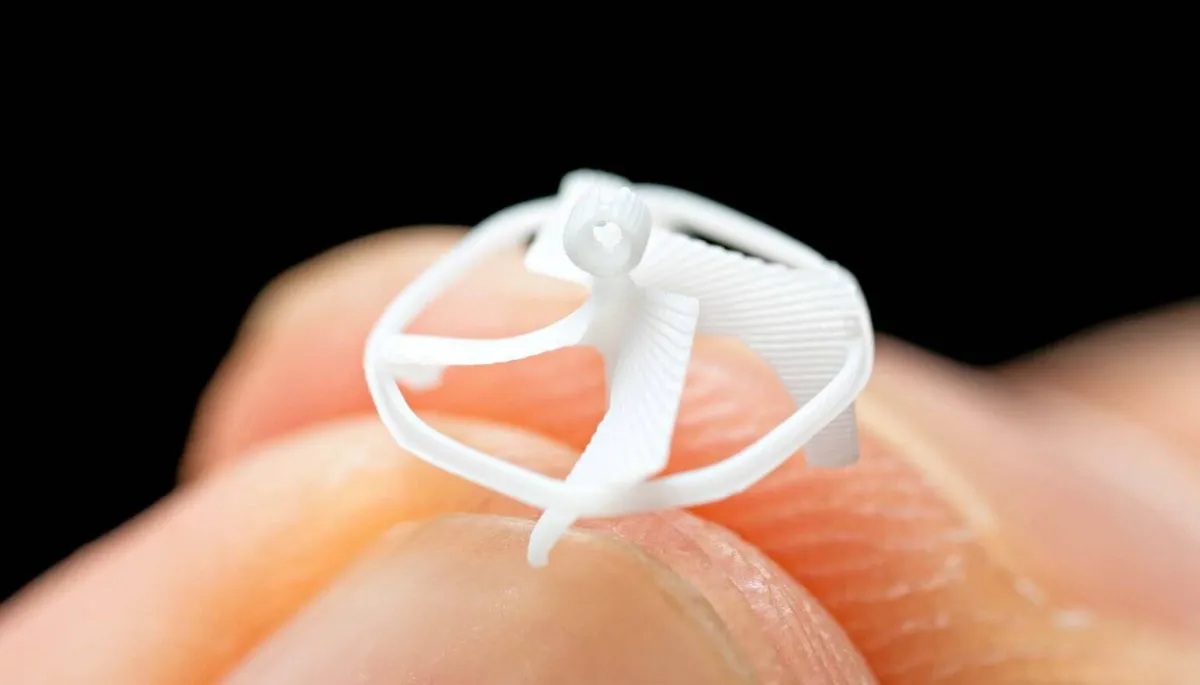Wireless Bird Robot in the world … as sand grain!

At an unusual stage for developing mini -robots, engineers at the University of California in Berkeley succeeded in developing the world’s lowest wireless bird robot. The design of this small device is inspired by the flexibility and efficiency of the bee; It does not exceed a centimeter diameter and the weight is only 21 milligrams. Despite its small size, it has the potential to fly and stabilize in the air, change the direction and definitely target specific bodies!
This innovation solves great challenges in the world of micro -robots, especially for energy saving and control policies. Traditional designs usually depend on internal batteries and complex electronic systems, which are not practical on this small scale. To overcome this obstacle, the Berkeley team created a new approach to the use of an external magnetic field to provide power and control the movement of the robot at the same time.
Simplified light design
The robot structure resembles a small fan with microscopic magnets. And when exposed to the external magnetic field, these magnets produce the forces that produce the appropriate lifting power to rotate and fly. By adjusting the intensity and direction of the magnetic field, researchers can specify the robot route with high accuracy.
This payment and control method is not only to reduce the weight of the device, but its design has completely simplified, as it eliminates the need for internal energy sources or complex electronic circuits. The result can move in high -ranking robot, narrow and complex places, which are difficult to reach traditional running aircraft. This field is difficult to reach inside industrial pollution, environmental control and pipes or industrial machines. Although the current model is successful in the controlled surroundings, it only works in negative flight conditions, that is, without internal sensors to reveal its location or in real time. It is possible to affect environmental factors such as Wind Gastric. One of the most important priorities of the development of active control systems, allowing the robot to adjust its location afterwards and automatically balance during the flight.

Challenges repeatedly
The development of this mini -fling robot indicates great progress in the field of micro -robots. The problem of energy saving, control and stability is always a big challenge for this type of device. For example, the robot project at Harvard University achieved limited flights using nutrition and control wires, but it did not reach full wireless operating level. The Delfly also presented the Dellley Project at the Dutch University of Delft, winning the planes with large quantities, but they are not compared to this innovation with size and accuracy. By relying on external magnetic fields of energy and control, the Berkelle team provides a new model in the mini -A automated world, exceeds weight and complex limits and gives high accuracy in movement, which is ideal for tasks that require extravagant accuracy.
Possible apps
In the future, this type of technical app is very optimistic. In agriculture, these robots are useful in helping artificial insemination activities, thereby reducing the effects of a decrease in the number of bees. In industrial environments, they can go inside the machines to examine or maintain parts without the need to tear them, which reduces the time of stopping. Its ability to enter narrow places is very useful in rescue, environmental monitoring and security activities.
Some technical challenges
However, the technical challenges must be overcome before receiving these robots in the real world. In addition to these challenges, consolidation of sensors and self -concentrol systems, in addition to developing pathways to produce and control magnetic fields in various environments. To achieve this, it takes a multidisciplinary collaboration that combines materials, smart systems and electromagnetic theories.
Moral and practical observations
As with any developing technology, there are concerns that need to be solved. Privacy comes in the front, where microscopic robots can be abused under illegal supervision. Institutional framework should be developed to be responsible for their expansion. In addition, the durability of robots and their management in real conditions is still a matter of development.
The world’s smallest radio robot development in the world is the greatest success in the world. By mimicing insect movement and the exploitation of external magnetic forces, this innovation paves the way for a new generation of mini devices, which can become a part of agriculture, industry, search and rescue.
